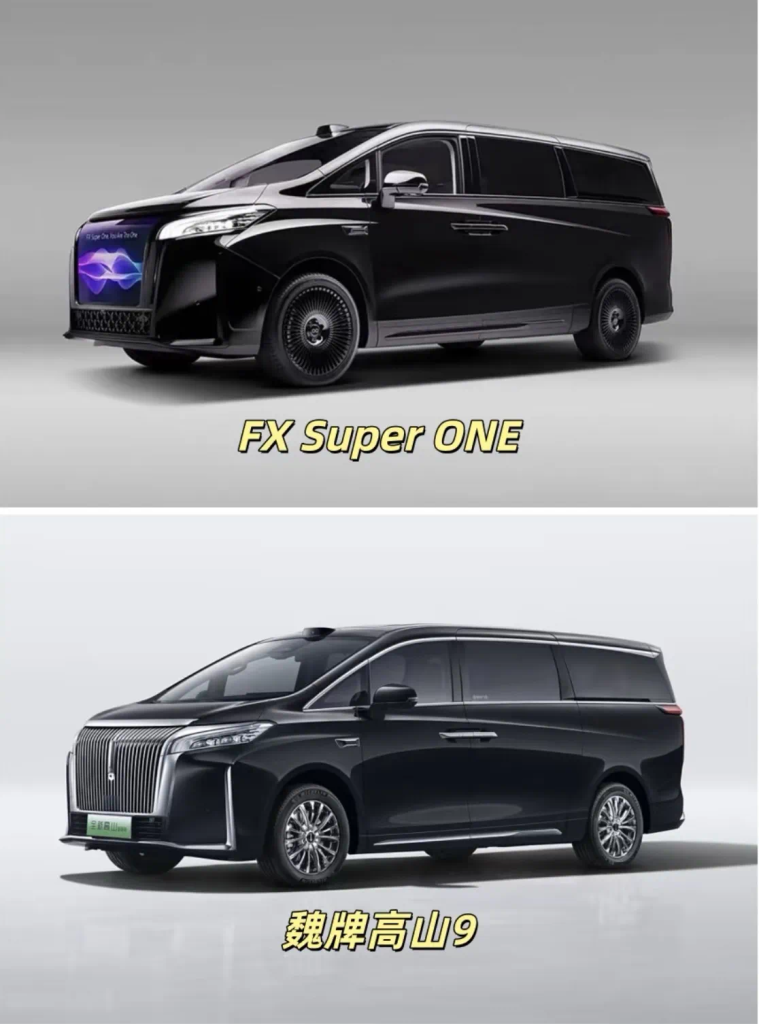In a significant development for the global automotive industry, Great Wall Motor (GWM), one of China’s leading automakers, has reportedly partnered with Faraday Future (FF), a Los Angeles-based electric vehicle (EV) startup, to bring its premium Wey Gaoshan minivan to the U.S. market under the rebadged name FX Super One. This collaboration, detailed in recent reports by Chinese media outlet Yiou and other sources, marks a strategic move by GWM to navigate the highly restrictive U.S. automotive market while leveraging FF’s local presence. Below, we explore the implications of this partnership, its strategic underpinnings, and what it means for both companies and the broader EV landscape.
A Strategic Partnership to Bypass U.S. Barriers
The U.S. automotive market has long been a challenging frontier for Chinese automakers due to stringent regulations, high tariffs, and geopolitical tensions. Over the past few years, the U.S. government has implemented policies that effectively limit the entry of Chinese-made vehicles, making direct market penetration a daunting task for companies like GWM and its competitor BYD. However, GWM’s collaboration with FF offers a clever workaround. By licensing its Wey Gaoshan minivan to FF for rebadging as the FX Super One, GWM can tap into the U.S. market indirectly, with FF handling final assembly at its Hanford, California facility using semi-knocked-down (SKD) kits imported from China. This approach is designed to mitigate the impact of U.S. tariffs on fully assembled vehicles, a strategy that could set a precedent for other Chinese automakers eyeing the U.S. market.
The FX Super One, unveiled by FF on July 17, 2025, in Los Angeles, is a luxury plug-in hybrid multi-purpose vehicle (MPV) that mirrors the Wey Gaoshan 9 in design and specifications. With a wheelbase of approximately 3,302 mm, a 51.55 kWh battery offering a 201 km electric range (CLTC standard), and a combined power output of 337 kW from a 1.5-liter turbocharged engine paired with two electric motors, the vehicle is positioned as a premium offering. FF has also introduced distinctive features, such as an AI-powered “Front AI Communication Ecosystem” (F.A.C.E.) LED grille, to differentiate the FX Super One from its Chinese counterpart. The minivan is available in four-, six-, and seven-seat configurations, targeting affluent consumers and the luxury for-hire transportation segment, with ambitions to challenge the likes of the Cadillac Escalade.
Why This Matters for Great Wall Motor
Under the leadership of Chairman Wei Jianjun, GWM has grown from a small agricultural vehicle repair workshop in Baoding, Hebei, into one of China’s top automakers, with 1.23 million vehicles sold globally in 2024. The company has built a strong portfolio of brands, including Haval, Wey, Tank, Poer, and Ora, with Wey positioned as its premium offering. The Wey Gaoshan, priced between RMB 309,800 ($43,310) and RMB 353,800 in China, represents GWM’s push into the luxury MPV segment, a category gaining traction globally. Wei Jianjun’s global ambitions were evident when he showcased the Gaoshan to Brazilian President Luiz Inacio Lula da Silva in May 2025, signaling its role as a flagship model for international markets.
The partnership with FF is a critical step in GWM’s U.S. expansion strategy. By leveraging FF’s U.S.-based operations, GWM can circumvent trade barriers while benefiting from FF’s branding and marketing efforts in the premium EV segment. The collaboration also aligns with GWM’s broader goal of addressing overcapacity in China’s highly competitive EV market, where a price war has squeezed margins. Exporting vehicles, even indirectly, allows GWM to capitalize on global demand for affordable, high-quality EVs.
Faraday Future’s Role and Challenges
For Faraday Future, this partnership offers a lifeline amid its turbulent history. Founded by Chinese entrepreneur Jia Yueting, FF has struggled to deliver on its ambitious promises, with only around 20 FF91 luxury EVs sold since its debut in 2023, primarily to investors and influencers. The company’s recent $105 million funding round has fueled the launch of the FX Super One under its new Faraday X sub-brand, which aims to target a more accessible price point—likely around $70,000—compared to the FF91’s $309,000 price tag. The FX Super One’s reliance on GWM’s proven Wey Gaoshan platform reduces development costs and risks, allowing FF to focus on localization, software enhancements, and unique features like the AI-powered F.A.C.E. display and an “Embodied AI” system for voice and gesture interactions.

However, FF’s track record raises concerns about execution. The company’s limited production capacity, ongoing financial challenges, and recent scrutiny from the U.S. Securities and Exchange Commission (SEC) cast doubt on its ability to scale production and meet demand. Despite FF reporting over 10,000 pre-orders for the FX Super One, the company’s vague specifications and unproven delivery capabilities suggest that significant hurdles remain.
Implications for the U.S. EV Market
The GWM-FF partnership could reshape the U.S. EV landscape by introducing a competitive, luxury-oriented MPV at a time when electric minivans are scarce. With only the Volkswagen ID.Buzz currently available in this segment, the FX Super One has the potential to fill a market gap, particularly for families and chauffeured professionals who prioritize rear-seat comfort and versatility. However, the collaboration also raises broader questions about the integration of Chinese automotive technology into the U.S. market. While the SKD assembly strategy may bypass tariffs, it could spark debates about the loss of domestic manufacturing jobs and the growing influence of Chinese automakers in a protectionist market.
For investors, the partnership highlights both opportunities and risks. GWM’s stock (HKG: 2333) could benefit from successful U.S. market penetration, reinforcing its position as a global automotive leader. Conversely, FF’s stock (NASDAQ: FFAI) remains a high-risk investment given its operational challenges and limited track record. The collaboration’s success will hinge on FF’s ability to execute production and delivery while maintaining the premium positioning of the FX Super One.
Looking Ahead
The GWM-FF partnership is a bold move that underscores the evolving dynamics of the global EV industry. For GWM, it represents a pragmatic approach to cracking the U.S. market, leveraging Wei Jianjun’s vision for global expansion and the Wey brand’s premium credentials. For FF, it offers a chance to redefine its narrative, provided it can overcome its historical challenges. As the FX Super One prepares to hit U.S. roads, all eyes will be on whether this collaboration can deliver on its promise of luxury, innovation, and market disruption—or if it will become another chapter in FF’s saga of unmet expectations.
Disclaimer: The information in this article is based on reports from sources including CnEVPost, CarNewsChina, and Electrek, and reflects the latest available data as of July 26, 2025. Investors should conduct their own due diligence before making investment decisions.
